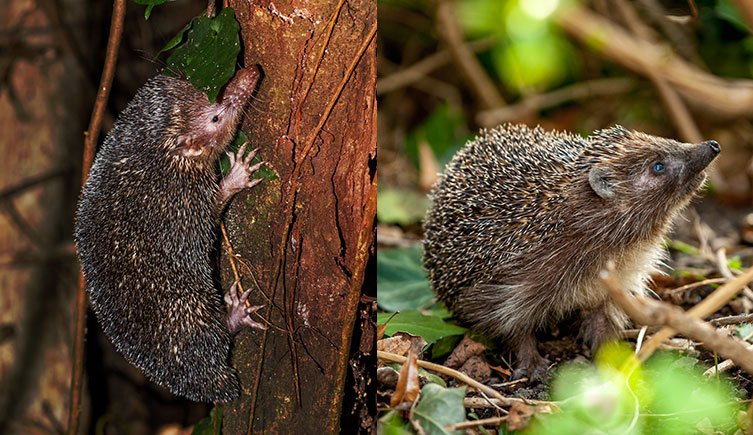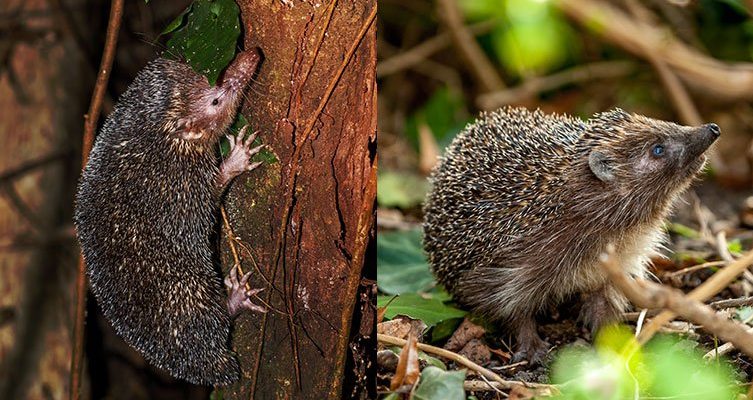
Now, let’s dive into the evolutionary history of the tenrec. Understanding where they come from and how they evolved can change the way we see these fascinating animals. It’s like peeling back the layers of an onion, revealing the many chapters of an epic story. So, grab your favorite beverage, and let’s explore the tale of the tenrec together.
What is a Tenrec?
Before we venture into the past, it’s crucial to know what a tenrec actually is. Tenrecs are small mammals that belong to the family Tenrecidae. There are about 30 different species of tenrecs, each with its unique adaptations. Some look like hedgehogs, while others resemble small otters or even shrews! They vary significantly in size, color, and habitat preferences.
Their spiky fur serves as a protective mechanism against predators, while some species, like the greater tenrec, are known for their ability to produce a strong odor to fend off threats. You might wonder, “Why do they have such diverse forms?” Well, it all boils down to evolution and the unique environments they inhabit.
Tenrecs are primarily found in Madagascar, which is like their native homeland. But you can also spot a few species in the African mainland. Due to their varied habitats, tenrecs have adapted in remarkable ways, showcasing nature’s ability to thrive in different environments.
The Ancestral Roots of Tenrecs
To understand the tenrec’s evolutionary history, we need to go back millions of years. Tenrecs are believed to belong to a group of mammals called Afrotherians. This diverse group includes elephants, manatees, and aardvarks—yes, it’s quite the eclectic family!
Scientists think that tenrecs and their relatives diverged from a common ancestor around 70 million years ago. This ancestor likely roamed the supercontinent Gondwana, which eventually split into Africa, South America, Australia, and Antarctica. As these landmasses drifted apart, so did the species that inhabited them.
Then, something interesting happened. After Madagascar separated from the rest of the world, its unique environment led to rapid evolution. Tenrecs began to adapt to their new surroundings, developing traits that set them apart from their relatives. Think of Madagascar as a giant laboratory where nature plays around, tweaking and adjusting species to fit their niches better.
How Tenrecs Adapted to Their Environment
As tenrecs settled into Madagascar’s diverse landscapes, they developed some remarkable adaptations. Depending on their species, you can find them living in rainforests, savannas, and even deserts. Here are a few adaptations that stand out:
- Body Size Variation: Species like the lesser hedgehog tenrec are tiny, while the greater tenrec can be significantly larger. This size variation allows them to exploit different food sources and habitats.
- Dietary Flexibility: Most tenrecs are insectivores, feasting on insects and worms. However, some species have evolved to consume fruits or other plant materials, showcasing their adaptability.
- Social Behavior: While many mammals are solitary, some tenrecs are quite social. They use vocalizations and scent markings to communicate, which helps them thrive in group settings.
These adaptations show just how resilient tenrecs are. They’ve become masters of survival in environments that can be challenging.
The Role of Tenrecs in Ecosystems
Now that we know about their fascinating adaptations, let’s talk about why tenrecs matter in their ecosystems. They play crucial roles in maintaining environmental balance. As insectivores, they help control insect populations, which can benefit agriculture and reduce the spread of pests.
Additionally, some species are seed dispersers, spreading plant seeds as they move around in search of food. This behavior helps promote vegetation growth and contributes to the health of their habitats.
Here’s the thing: when tenrec populations decline or face threats, it can ripple through the ecosystem. Their absence might lead to pest overpopulation or changes in plant communities. Basically, these little mammals have a big impact!
Conservation Challenges and Efforts
Like so many species, tenrecs face significant challenges today. Their habitats are threatened by deforestation, agriculture, and climate change. Madagascar is experiencing rapid environmental changes, making the survival of tenrec species increasingly precarious.
Conservationists are stepping in to help. Programs aimed at preserving tenrec habitats focus on reforestation, sustainable agriculture, and educating local communities about the importance of these unique animals. The goal is to strike a balance between human needs and the preservation of wildlife.
You might be wondering how you can help. Supporting organizations working towards wildlife conservation in Madagascar or being mindful of the products you consume can make a difference. Every small action counts!
The Future of Tenrecs: Hope for Their Survival
So, what does the future hold for tenrecs? While the challenges are daunting, there’s hope. With ongoing conservation efforts and increased awareness, there’s potential to stabilize and even grow tenrec populations.
Research is also advancing. Scientists are learning more about their behaviors, genetics, and ecological roles. This knowledge is vital for developing effective conservation strategies.
Imagine a future where tenrecs thrive in their natural habitats, playing their essential roles in the ecosystem. It’s a future worth striving for, and we all have a part to play.
The story of the tenrec is a captivating journey through evolution, adaptation, and survival. From their ancient roots in the time of Gondwana to their unique adaptations on Madagascar, tenrecs remind us of the beauty and resilience of nature. They may be small, but their impact is significant, proving that every creature has its place in the grand tapestry of life.
As we continue to learn about and protect these fascinating mammals, we must remember that preserving their habitat is crucial for their future. So, the next time you hear about tenrecs, think of them not just as an oddity, but as integral pieces of the puzzle that is our world. Let’s work together to ensure their story continues for generations to come.

